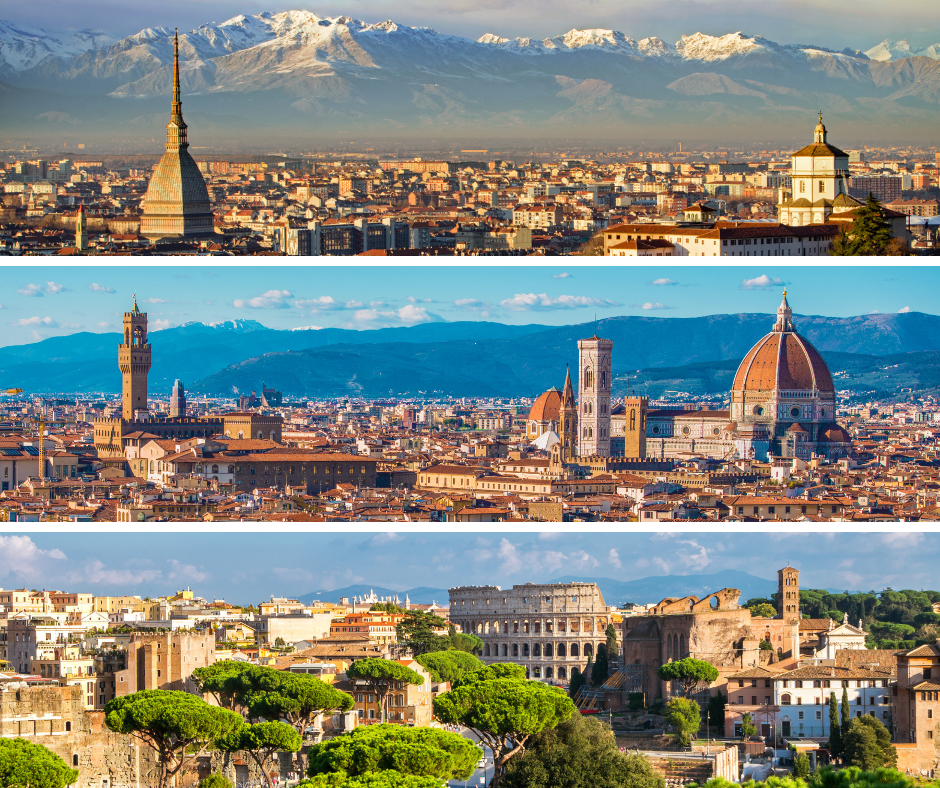Although Rome has always been at the center of Italian events, it was not the only capital of the country. Italy has had three!
The first Italian capital was Turin: when the Unification of Italy was proclaimed in 1861, Rome did not fall within the national borders. After the Expedition of the Thousand led by Garibaldi, the Veneto, still in the hands of the Austrians, remained outside the Kingdom of Italy and the Papal State, where the intransigent Pope Pius IX had no intention of giving the "eternal city" to the newborn Italian kingdom. Thus Turin, the former capital of the kingdom of Sardinia, was provisionally elected as the administrative center of the new state.
Under pressure from the French Emperor Napoleon III, nephew of Napoleon Bonaparte and a powerful ally of the Pope, on 15 September 1864, an agreement was signed with the Italians which established that the capital was moved from Turin to Florence and that the expansionist aims on Rome were abandoned.
Since Florence should have remained the capital of the very young Italian kingdom, huge public works began immediately to adapt the then small Tuscan city to its new role: most of the old fourteenth-century walls were demolished to make room for avenues and administrative buildings, while the majestic Renaissance palaces became the headquarters of ministries and state offices.
But contrary to what was promised to Napoleon III, Italy organized a military attack against the Papal State and, in 1870, with the famous episode of the Porta Pia breach, conquered Rome, which from 1871 became the third capital of Italy.
It is curious to note that the city of Rome obtained constitutional recognition of the status of capital only in 2001 with the reform of Title V of the Italian Constitution.
Scuola Leonardo da Vinci
Learn Italian in Italy in Florence, Milan, Rome, Turin and Viareggio
Latest posts by Scuola Leonardo da Vinci (see all)
- "ITALIANO E MITOLOGIA" - EPISODE 8 (SEASON 6TH) - February 28, 2024
- "CINEMA ITALIANO" - ITALIANO ON-Air is back with the sixth season! - January 11, 2024
- BUFALE - EPISODE 8 (SEASON 5th) - November 16, 2023









